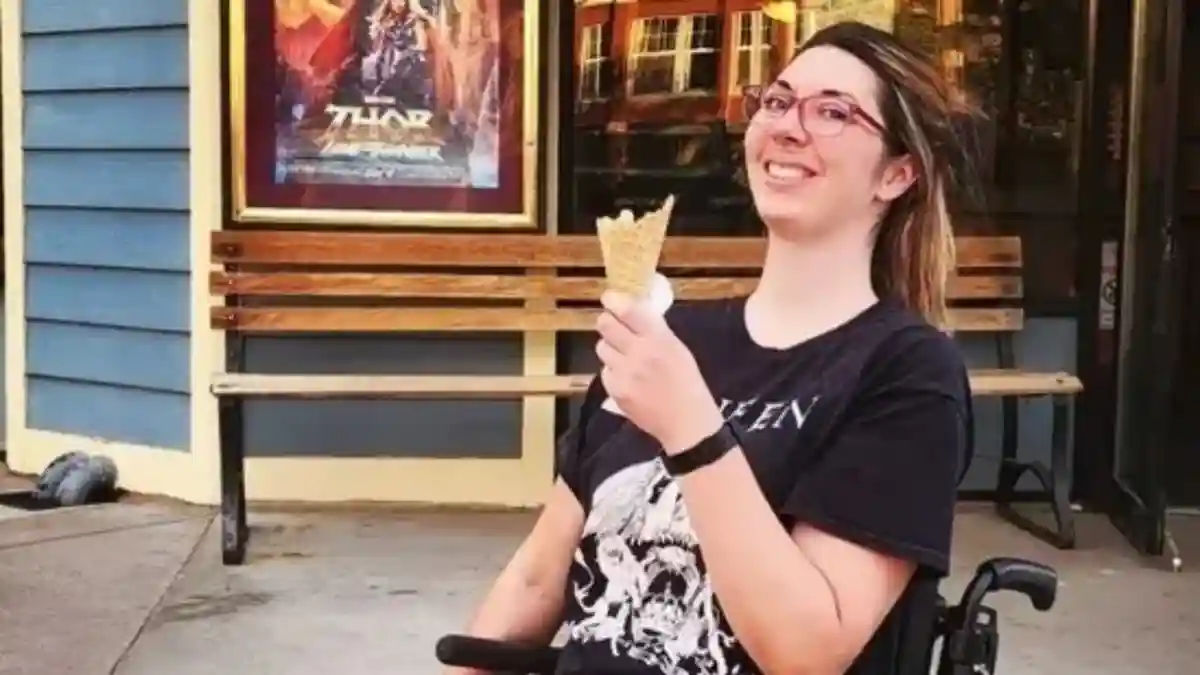In a shocking and rare medical case, a woman from Illinois, USA, had her head internally detached from her spine during a football accident. After going through 37 painful surgeries, doctors were finally able to reattach her skull to her spine.
The woman, named Megan King, shared her story with The Sun and DailyMail. The accident happened back in 2005 when Megan was just 16 years old. She was playing football when she suddenly fell to the ground. What happened next was something no one could have imagined.
Megan suffered what doctors call an “internal decapitation”. This means her skull was separated from her spine inside her body, even though her skin and neck looked normal from the outside. The rare condition is known as Atlanto-occipital dislocation (AOD). This type of injury is usually deadly, but Megan survived.
Long Recovery and Years of Pain
After the accident, Megan had to go through more than 30 surgeries. She spent over a year using crutches to walk. Life became very difficult. Her joints became loose, her muscles began tearing, and she was in constant pain.
Over the years, Megan’s condition kept getting worse. Her body felt weak and unstable, and no one could figure out the exact cause at first.
Finally, ten years after the accident, doctors were able to give her a correct diagnosis. Megan was found to have a rare genetic disorder called hypermobile Ehlers-Danlos syndrome (hEDS). This condition affects the body’s ability to make collagen, which is the protein that helps hold bones, skin, and tissue together. Without strong collagen, her joints and bones could easily move out of place or become injured.
The Halo Brace and a Scary Moment
As part of her treatment, doctors had to fit Megan with a halo brace. This is a metal device that is attached to the skull using screws. It helps keep the head in a stable and upright position.
However, during the removal of this device, things took a terrifying turn. Her skull began to separate again from her spine. Megan described it as a nightmare. She said, “I flew my chair back to keep gravity from decapitating me. My neurosurgeon had to hold my skull in place with his hands. I couldn’t stand. My right side was shaking uncontrollably.”
Doctors immediately rushed her into emergency surgery. They performed a procedure called spinal fusion, where bones in the spine are joined together so they don’t move. This helped to secure Megan’s skull back to her spine.
Megan said the whole experience felt like a “horror show.” After the surgery, she woke up unable to move her head at all. But she was grateful to be alive.
37 Surgeries and a New Chance at Life
In total, Megan has had 37 surgeries to fix her condition and manage the effects of hEDS. She regularly shares her journey and health updates on Instagram, where she also posts photos and talks about her recovery.
Her story has inspired many people, especially those who suffer from rare diseases or chronic pain. She uses her platform to raise awareness about Ehlers-Danlos syndrome and the struggles people face when living with invisible illnesses.
Megan’s strength and courage have amazed doctors and followers alike. Despite the pain and challenges she has faced, she continues to stay positive and hopeful.
She’s a true fighter who refused to give up, even when her condition seemed impossible to treat.
What is Atlanto-Occipital Dislocation?
Atlanto-occipital dislocation (AOD) is a very serious injury where the skull becomes separated from the spine at the top of the neck. It is often caused by a strong impact or trauma, such as in car accidents or severe falls. Most people do not survive this injury, so Megan’s case is extremely rare.
What is Hypermobile Ehlers-Danlos Syndrome (hEDS)?
Hypermobile Ehlers-Danlos Syndrome (hEDS) is a genetic condition that affects the connective tissues in the body. People with this condition are more likely to have flexible joints, stretchy skin, and are prone to frequent joint dislocations and injuries. It can also cause long-term pain and fatigue.
There is currently no cure for hEDS, but with proper medical care, physical therapy, and support, people with the condition can manage their symptoms and lead meaningful lives.
Megan King’s story is one of hope, courage, and determination. From a terrible accident at 16 to a rare diagnosis and dozens of surgeries, she has shown incredible bravery. Her journey reminds us how powerful the human spirit can be — even when facing life-threatening challenges.

